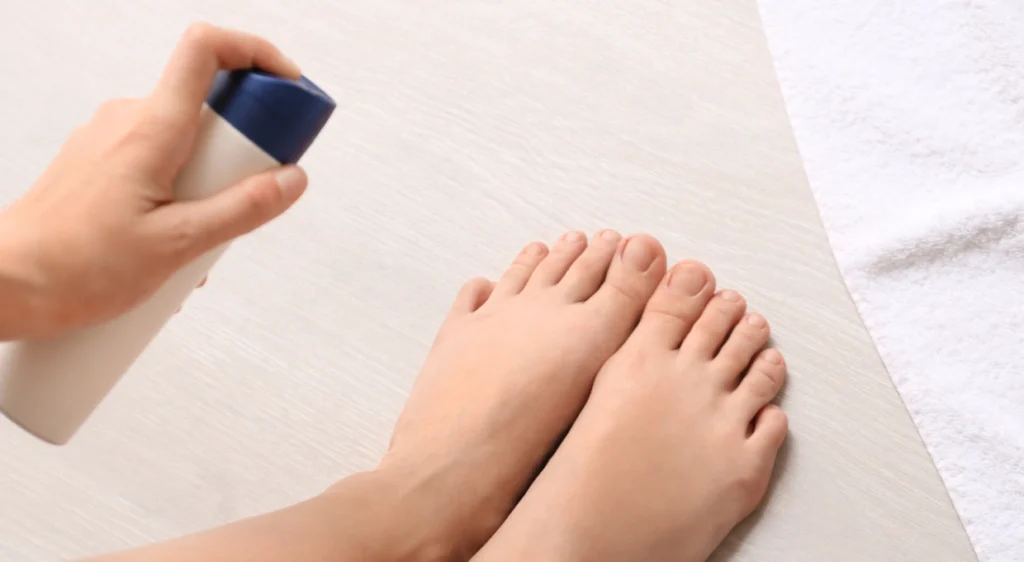Metatarsalgia and Morton’s neuroma are two conditions that affect the foot, specifically in the metatarsal area, and although they may share some symptoms, they are distinct conditions with different causes, manifestations and treatments. Understanding the differences between the two is crucial to receive proper treatment and avoid long-term complications.
What is metatarsalgia?
Metatarsalgia is a general term that refers to pain in the front part of the foot, more specifically in the metatarsal area, which are the bones located just before the toes. This pain is usually the result of an overload on the ball of the foot, which can be due to several factors:
- Mechanical overload: The use of inappropriate footwear, such as high heels or shoes without sufficient cushioning, can cause excessive pressure on the metatarsals, leading to inflammation and pain.
- Intense physical activity: High-impact sports such as running, jumping or dancing can increase stress on the metatarsals, causing pain.
- Foot deformities: Conditions such as pes cavus, bunion or claw toes can redistribute the load abnormally on the foot, contributing to metatarsalgia.
- Age and overweight: With aging, the fat pad that protects the ball of the foot may thin, and being overweight can increase pressure on the metatarsals.
Symptoms of metatarsalgia:
- Sharp or stabbing pain in the front part of the foot, especially when standing, walking or running.
- Feeling that there is a stone in the shoe or that the foot is “cushioned”.
- Swelling or redness in the affected area.
- Pain that worsens with physical activity and improves with rest.
What is Morton’s neuroma?
Morton’s neuroma, on the other hand, is a specific condition that affects the common digital nerve between the metatarsals, usually between the third and fourth toes. It is an irritation or thickening of the tissue around the nerve, resulting in compression and pain. Causes of Morton’s neuroma may include:
- Wearing narrow or high-heeled shoes: These types of shoes can compress the nerves between the metatarsals, contributing to the development of the neuroma.
- Repetitive trauma or injury: Activities that cause repetitive pressure on the ball of the foot can irritate the nerve, causing it to thicken.
- Foot anatomy: People with flat feet or a high arch are more likely to develop Morton’s neuroma due to uneven pressure distribution in the foot.
Symptoms of Morton’s neuroma:
- Burning pain or burning sensation in the area of the affected nerve, which may radiate to the fingers.
- Feeling that there is a stone in the shoe or that the socks are wrinkled.
- Tingling or numbness in the affected fingers.
- Pain that is aggravated by wearing narrow shoes and improved by removing them or massaging the foot.
Key differences between metatarsalgia and Morton’s neuroma
- Cause of pain:
- Metatarsalgia: It is generally caused by a mechanical overload or a structural problem of the foot that affects the metatarsal bones.
- Morton’s neuroma: It is a nerve condition caused by irritation or compression of a specific nerve between the metatarsals.
- Location of pain:
- Metatarsalgia: The pain is more generalized in the ball of the foot and may affect several metatarsals.
- Morton’s neuroma: Pain is localized between the third and fourth metatarsal and may radiate to the toes.
- Type of pain:
- Metatarsalgia: The pain is usually stabbing or a sensation of pressure on the ball of the foot.
- Morton’s neuroma: The pain is more characteristic of a burning or stinging sensation, accompanied by tingling or numbness.
Treatment of metatarsalgia and Morton’s neuroma
Treatment of both conditions may involve similar approaches, although they are tailored to the particularities of each:
- Changes in footwear: For both metatarsalgia and Morton’s neuroma, wearing well-cushioned shoes with ample toe room and avoiding high heels is crucial.
- Orthotics: Orthopedic insoles can help redistribute pressure in the foot and relieve pain in both conditions.
- Physical therapy: Specific exercises can strengthen the foot muscles and improve alignment, especially in cases of metatarsalgia.
- Medications: Analgesics or anti-inflammatory medications can help control pain and inflammation in both conditions.
- Specific treatments for Morton’s neuroma: In severe cases, corticosteroid injections may be considered to reduce inflammation or, in extreme cases, surgery to relieve nerve compression.
Conclusion
Although metatarsalgia and Morton’s neuroma may have similar symptoms, they are distinct conditions with specific causes and treatments. It is important to see a specialist for an accurate diagnosis and appropriate treatment, especially if the pain persists and affects your quality of life. With the right interventions, it is possible to effectively manage both conditions and maintain an active, pain-free life.



